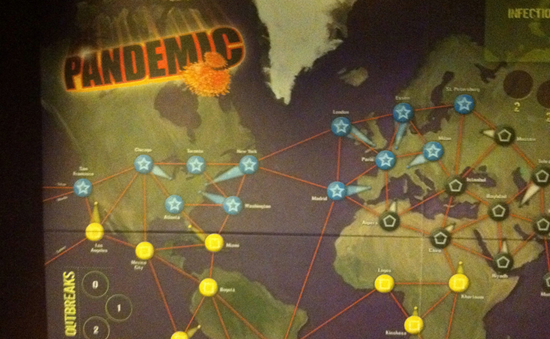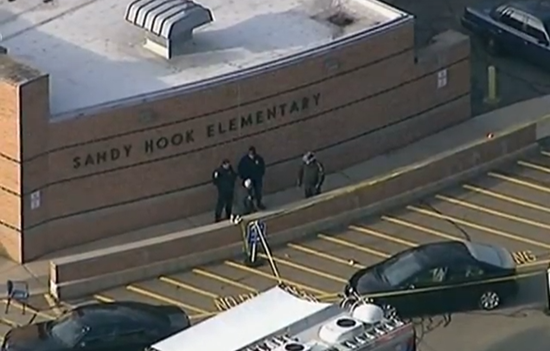
You've probably heard the quote: "Those who cannot remember the past are condemned to repeat it" [source: Santayana]. Sure, it's a little dramatic, and you wouldn't be blamed for letting loose a loud sigh and eye roll if someone said it to you in a preachy way. But the man who wrote these words, philosopher George Santayana, actually had a good point. Continuity is necessary to progress - or, in normal-people words, we gotta remember how we've done stuff in the past in order to do it better in the future.
When you put it that way, it seems like common sense. You eat ice cream too fast and you get a headache. So next time you slow down a little. Clearly. But if history is full of warnings, we haven't always been very good at heeding them. The past is bursting with people who made mistakes similar to those of their predecessors, and, lo and behold, they suffered similar consequences. These tragedies are especially sad because they are so preventable.
So did all of history's disasters happen because some poor sap dropped the ball? Not really. Sometimes bad things happen that no one can control. And sometimes they happen over and over again to the same people. It's simply bad luck.
Either way, there are plenty of examples of repeat tragedies. Here are some of the worst.
10. Military Miscalculations
Take it from Vizzini, the bald kidnapper in The Princess Bride: "Never get involved in a land war in Asia!" Or, at the very least, get out of Russia before winter. That's the lesson both Napoleon Bonaparte and Adolph Hitler learned during their failed attempts to attack the massive Eurasian country. True, these were pretty bad dudes and the world is better off because they lost; but the horrific suffering of their armies nevertheless made the invasions similarly "inconceivable!"
In June 1812 Napoleon assembled an army of 600,000 to invade Moscow and subdue his former ally, Czar Alexander I [source: PBS]. As he marched into Russia, it was typhus-carrying lice, not enemy soldiers, that began to take a toll on his forces. But despite typhus and trench fever, a weakened French army reached Moscow on Sept. 14, declaring victory in the largely vacated city [source: Knight]. On the return trip, however, temperatures plummeted to -22 degrees Fahrenheit (-30 Celsius), freezing the beleaguered soldiers' lips together and killing thousands of horses. Facing such harsh conditions with little food, as few as 10,000 men made it back home [source: Minard].
Fast-forward to 1941 as Hitler's army began its own June invasion of Russia, known as Operation Barbarossa [pictured above]. Believing victory would take only a few months - and despite owning several books about Napoleon - the Nazi leader sent his troops into battle ill prepared for the impending winter. Again, plummeting temperatures and a lack of warm coats and hats meant many returned home without ears, noses, fingers and even eyelids [source: Roberts].
9. Economic Crashes
In late 2007 the United States economy went into a tailspin. The stock market dropped like a lead elephant while the only thing going up, it seemed, was unemployment. Predictably, commentators soon began to make doomsday comparisons between the "Great Recession," as it became known, and the Great Depression of the 1930s. But was this really a repeat?
Certainly, the similarities were concerning. Both were preceded by periods of prosperity. Both came at a time when banks were experimenting with new ways of doing business (consumer credit in the 1920s and pooling mortgage debt in the 2000s). Both even followed asset bubbles, which occur when prices exceed what something is actually worth (Florida real estate and the stock market in the 1920s, and tech companies and real estate in the 2000s) [source: Geewax]. And then there was the sharp stock market decline in the first 18 months after the initial crash: 45 percent during the Great Depression and 54 percent during the Great Recession [source: Jacobsen].
By and large, however, the Great Depression was much worse. Its 43-month duration made the 18-month Great Recession seem mild by comparison. In the period after the 1929 crash, unemployment went up 19.3 percentage points compared to rising just 5.7 percentage points after 2007. And remember all the banks that failed during the Great Recession? There were 443, which seems high until you consider that some 9,000 closed during the Great Depression [source: Geewax]. Ouch.
8. Assassinations
You know those messages that get forwarded around email or Facebook claiming to reveal supposedly shocking coincidences between two historical events? If you're like many people, you probably can't find the delete button fast enough. But if not, you might have seen the one about the remarkable similarities between the assassinations of Abraham Lincoln and John F. Kennedy.
While some of those claims have been debunked (it is the Internet after all), some are true. Yep, both presidents were shot on Friday with a fatal bullet to the head after being warned not to go out. Their successors were both named Johnson; Andrew was born in 1808 and Lyndon in 1908. Both assassins - John Wilkes Booth and Lee Harvey Oswald - have 15 letters in their names. And, most peculiarly, Booth escaped from a theatre and was captured in a warehouse (well, a tobacco shed), and Oswald fled a warehouse and was caught in a theatre [source: Snopes].
These are pretty intriguing similarities, but before we declare a rip in the space-time continuum, consider this: There are a lot of other things that weren't similar. Lincoln and JFK weren't shot with the same gun. It wasn't the same time of day. Heck, it wasn't even in the same city. Perhaps, as some experts believe, it's simply human nature to look for patterns even if there really aren't any [source: Shermer].
7. Genocide
When people think of genocide, chances are their minds quickly turn to the Holocaust. During the horrific event, Nazi Germany systematically rounded up and imprisoned Jewish, gays, Roma people, communists and others who did not fit into Hitler's worldview. There, some 11 million concentration camp prisoners ultimately died from starvation, exhaustion or execution. It was so terrible, in fact, that German schools now mandate teaching of the Holocaust in hopes that future generations will never repeat the mistakes of their past [source: Frontline]. And other countries have pledged to stop it if it does happen. "[N]ever again will the world...fail to act in time to prevent this terrible crime of genocide," U.S. President Jimmy Carter proclaimed in 1979 [source: Holocaust Museum, FAQs].
But did you know there have been as many as two dozen instances of genocide since the Holocaust? [source: Inter-Parliamentary Alliance] That figure depends on how genocide is defined, but generally it involves violent crimes carried out against a group of people with the ultimate intent to exterminate them. Take Cambodia's Khmer Rouge, which, between 1975 and 1979, killed as many as 2 million political dissidents - a shocking one-third of the country's population. Just 15 years later, during a 100-day span in 1994, Rwanda's Hutu government killed between one-half and 1 million Tutsis [Rwandan Genocide victims pictured above]. Such crimes continue in the 2010s, as some leaders have accused Syrian president Bashar al-Assad of killing his own people to retain power [source: Holocaust Museum, Cases].
6. Pandemics
It's a classic Hollywood storyline: A new disease pops up and spreads worldwide, much faster than science can come up with a cure. But this isn't just the stuff of action films. It's called a pandemic, and it's happened more than once in our history.
One that's still pretty well-known, despite the passage of several hundred years, is the Black Death. The plague originated in Asia, reaching Europe by the late 1340s where it killed a staggering number of people. Because the records back then weren't entirely thorough, no one is completely sure how many died, but estimates range from 25 million to 100 million [source: Filip]. Either way, it was nothing to sneeze at. In some cities, so few people survived that there was no one to bury the dead [source: Kennedy].
That kind of stuff only happened before modern medicine, right? Not exactly. There's another pandemic that started just four decades ago and continues to claim lives today: AIDS. This disease originated in Africa as early as 1920 but didn't spread worldwide until the 1980s [source: McCoy]. Since then, somewhere between 63 million and 89 million people have been infected with HIV, and 30 million to 42 million of those have died [source: UNAIDS]. That means, incredibly, that AIDS may have killed as many people - or even more - than the Black Death.
Yet, despite all that we know about such diseases, they still live on thanks to unsanitary conditions, cultural misunderstandings and a lack of education. Even the plague still rears its ugly head from time to time, particularly in developing countries in Africa and Asia. Which makes you wonder: Will we learn from these past pandemics, or are we setting ourselves up for another one?
5. Shipwrecks
The RMS Titanic. It's inspired countless documentaries, an Academy Award-winning motion picture, and not one, but several museums. You'd think from all that attention it must be the deadliest shipwreck of all time. But it's not even close.
Almost everyone, Leonardo DiCaprio fan or not, knows the basic story of the Titanic. In 1912 it set sail on its maiden voyage from England to New York, a luxurious and modern passenger liner that the builders claimed was "practically unsinkable." An iceberg in the North Atlantic proved them wrong, and the ship went down along with 1,503 of the passengers and crew [source: Louden-Brown]. A number of miscalculations by the builders, and the ship's captain, led to the Titanic's demise, most famously its shortage of lifeboats.
Decades later, in December 1987, the ferry Doña Paz [pictured above] departed Tachloban in the Philippines bound for Manila. It was packed with people travelling for the Christmas holiday: some 4,000 passengers on a ship built to carry only about 1,400 [source: History.com]. Disaster struck in the Tablas Strait when the ferry collided with an oil tanker, causing a massive explosion that quickly sank both ships. A passing ship pulled a couple dozen survivors out of the water, but as many as 4,375 perished [sources: History.com and Jackson]. It was the world's worst peacetime maritime disaster and has even been called "Asia's Titanic" [source: National Geographic Channel].
4. Tornadoes
Tornadoes are bad news. These storms have proven time and time again that they can level large swaths of communities unfortunate enough to fall in their path. Because of this deadly potential, people in the American South routinely flee to basements, closets and bathrooms when severe weather threatens. Usually, it's a false alarm. But sometimes a twister does touch down. And every great once in a while, one will strike twice in just a few years, months or even hours.
One such repeat happened in Harvest, Alabama, in March 2012. The town, which had just been hit by a tornado the previous April, found itself in the crosshairs of another powerful storm. Following a path nearly identical to the one before it, a tornado destroyed many of the same homes that had been repaired or rebuilt since the last disaster. Incredibly, this was the fourth tornado to hit Harvest since 1974 [source: Ariosto].
Even less likely was the string of three tornadoes that hit Codell, Kansas, in 1916, 1917 and 1918. Not only did they strike during three consecutive years, but they all happened on the same day: May 20. The first two twisters, rated F2 and F3, didn't take any lives and caused only minimal damage. But the third was a powerful F4 that tore straight through the middle of town. Again, no one was killed - perhaps because the town had wised up to the weather's repeat antics [source: Kansas Historical Society].
3. Engineering Disasters
Dam disasters are particularly dangerous because, unlike other structures, you don't have to be on or near them to be hurt when they fail. A catastrophic collapse can send millions, or even billions, of gallons of water into communities miles downstream. It's happened dozens of times, sometimes because of poor design and other times because of just downright bad luck.
One of the United States' most infamous dam collapses happened May 31, 1889, just outside of Johnstown, Pennsylvania. Looming just upstream was the South Fork Dam, which commenced operation in 1853 and had, disturbingly, already failed twice before. Because of poor construction and some equally misguided maintenance decisions, the dam failed, sending 3.6 billion gallons of water into the communities below. When the waters receded, 2,209 people were dead [source: National Park Service].
Despite the failure at Johnstown, few standards existed when dam builder extraordinaire William Mulholland built the St. Francis Dam in San Francisquito Canyon outside of Los Angeles in 1926. The first sign of trouble appeared on the morning of March 12, 1928, when water began pouring from one side of the concrete structure. By midnight it had collapsed, sending water and debris through town after downstream town [pictured above]. No one knows exactly how many people perished, but some estimates are as high as 600 [source: Blitz]. Though the cause turned out to be an inherent problem with the canyon wall, and beyond the control of the engineers of the time, it nevertheless spurred dam safety legislation in California and the surrounding states [source: Association of State Dam Safety Officials].
2. School Massacres
Mass killings are in the news a lot lately, and none is more tragic than the kind that happens at schools. Whether it's at a college like Virginia Tech, a high school like Columbine or an elementary school like Sandy Hook, the taking of young lives is an incredibly heart-breaking event. Many people think such killings are a recent phenomenon, but one of the deadliest occurred more than a century ago.
Of the recent school massacres, the Sandy Hook Elementary shooting in Newtown, Connecticut, stands out as one of the worst. That's where 20-year-old Adam Lanza arrived at 9:30 a.m. on Dec. 14, 2012, with two handguns and an assault rifle in tow. He had already killed his mother when he shot his way into the school and killed 20 students and six adults before turning the gun on himself. The children were just 6 and 7 years old [source: CNN].
Survivors of another massacre - this one in Bath, Michigan, 85 years earlier - expressed sorrow over the events in Newtown because they knew exactly how those terrified students must have felt. In 1927, school board member Andrew Kehoe spent several months wiring the Bath School with explosives before detonating them on May 18. The blasts killed 45 people, including 38 children. Like Lanza, Kehoe first killed a family member (his wife, Nellie) and later killed himself. While it was a terrible tragedy, it could have been even worse: Just 100 of the 600 pounds of dynamite Kehoe planted actually detonated as planned [source: Larson].
1. Mass Extinctions
When you talk about mass extinctions, you're not talking recent history. You're talking geological history. But this is, without a doubt, the worst way history has repeated itself. Why? Mass extinctions occur when more than 75 percent of all species on Earth die off in a relatively short period [source: Cosmos]. It's happened five times over the past 500 million years, and some scientists think we're in the early throes of the sixth.
One of the most notable of the "Big Five" extinctions, as they are known, is the Cretaceous-Tertiary event. It happened about 66 million years ago, when volcanic activity, climate change and an asteroid impact wiped out 76 percent of all species, including the dinosaurs. But the granddaddy of them all was the Permian mass extinction: A massive eruption in Siberia sparked a catastrophic chain reaction that killed an incredible 96 percent of all species [source: Cosmos].
Now some scientists claim the sixth mass extinction is already underway. That's because species are going extinct at a much faster rate than normal - possibly three to 12 times faster. That gives us three to 22 centuries to do something before we reach mass extinction territory, which is certainly something we don't want to repeat! [source: Pappas]
Author's Note: While I was researching this article, I came across a quote that's been credited to Mark Twain, though the link is somewhat dubious. But whoever did say it, I think, hit the nail on the head: "History does not repeat itself, but it rhymes." As this article shows, disasters almost always recur, sometimes many, many times. But the circumstances vary. Can we learn enough from our past to recognize looming disasters, even with these variations? All we can do is try.
Related Articles:
More Great Links:
Article Sources:
1. Ariosto, David. "Storm-battered town hit twice in a year." CNN. March 4, 2012. (Nov. 5, 2015)
2. Association of State Dam Safety Officials. "Dam Failures and Incidents." 2015. (Nov. 6, 2015)
3. Blitz, Matt. "On Occasions Like This, I Envy the Dead: The St. Francis Dam Disaster." Smithsonian. March 12, 2015. (Nov. 6, 2015)
4. CNN. "Sandy Hook Shooting: What Happened?" 2012. (Nov. 6, 2015)
5. Cosmos. "The big five extinctions." July 6, 2015. (Nov. 5, 2015)
6. Demuynck, Sarah et al. "Acts of Genocide Committed Since the Adoption of the Convention on the Prevention and Punishment of the Crime of Genocide in 1951." Inter-Parliamentary Alliance for Human Rights and Global Peace. 2015. (Nov. 3, 2015)
7. Filip, Iulia. "Avoiding the Black Plague Today." The Atlantic. April 11, 2014. (Nov. 4, 2015)
8. Frontline. "Holocaust Education in Germany: An Interview." May 31, 2005. (Nov. 3, 2015)
9. Geewax, Marilyn. "Did the Great Recession Bring Back the 1930s?" NPR. July 11, 2012. (Nov. 2, 2015)
10. History.com. "Ferry collides with oil tanker near Manila." 2009. (Nov. 4, 2015)
11. Huffington Post Weird News. "Lincoln-Kennedy Coincidences: Why Do They Still Thrive On The Internet?" March 8, 2013. (Nov. 3, 2015)
12. Jackson, Joe. "Unsafe at Sea: Asia's History of Deadly Ferry Disasters." Time. Jan. 20, 2012. (Nov. 4, 2015)
13. Jacobson, Louis. "Comparing the Great Recession and the Great Depression." Politifact. Sept. 19, 2013. (Nov. 2, 2015)
14. Kansas Historical Society. "Tornadoes." June 2014. (Nov. 5, 2015)
15. Kennedy, Maev. "Black Death study lets rats off the hook." The Guardian. Aug. 17, 2011. (Nov. 4, 2015)
16. Knight, Joe. "Napoleon Wasn't Defeated by the Russians." Slate. Dec. 11, 2012. (Nov. 2, 2015)
17. Larson, Leslie. "Chilling echoes of Sandy Hook: Survivors of America's deadliest school massacre in which 45 children and teachers died show solidarity with the people of Newtown." Daily Mail. Dec. 19, 2012. (Nov. 6, 2015)
18. Louden-Brown, Paul. "Titanic: Sinking the Myths." BBC. March 3, 2011. (Nov. 4, 2015)
19. McCoy, Terrence. "Scientists reveal distant origins of the AIDS pandemic." The Washington Post. Oct. 6, 2014. (Nov. 4, 2015)
20. National Geographic Channel. "Asia's Titanic." 2015. (Nov. 4, 2015)
21. National Park Service. "South Fork Dam." Nov. 6, 2015. (Nov. 6, 2015)
22. Pappas, Stephanie. "Humans on Verge of Causing 6th Great Mass Extinction." Live Science. March 2, 2011. (Nov. 5, 2015)
23. PBS. "Napoleon at War: Campaigns and Battles." November 2000. (Nov. 2, 2015)
24. Rees, Laurence. "Hitler's Invasion of Russia in World War Two." BBC. March 30, 2011. (Nov. 2, 2015)
25. Roberts, Andrew. "Second World War: Frozen to death by the Fuhrer." The Telegraph. July 25, 2009. (Nov. 2, 2015)
26. Santayana, George. "The Life of Reason: The Phases of Human Progress." Charles Scribner's Sons, 1905.
27. Shermer, Michael. "Patternicity: Finding Meaningful Patterns in Meaningless Noise." Scientific American. Nov. 17, 2008. (Nov. 3, 2015)
28. Snopes. "Linkin' Kennedy." Feb. 12, 2015. (Nov. 3, 2015)
29. UNAIDS. "Fact Sheet." 2013. (Nov. 4, 2015)
30. United States Holocaust Memorial Museum. "Cases." 2015. (Nov. 3, 2015)
31. United States Holocaust Memorial Museum. "Frequently Asked Questions." 2015. (Nov. 3, 2015)
Top image: Paperboy Ned Parfett holding a large banner announcing the sinking of the RMS Titanic in 1912. Credit: HalloweenNight/Wikimedia Commons.










Great article and thanks for linking to mine!
ReplyDelete